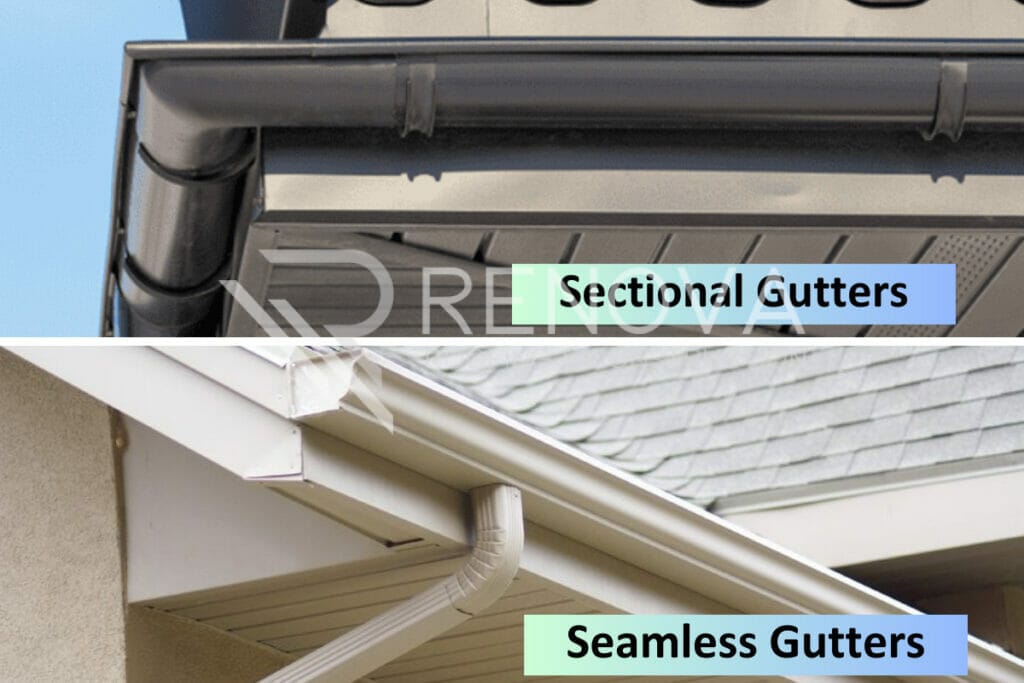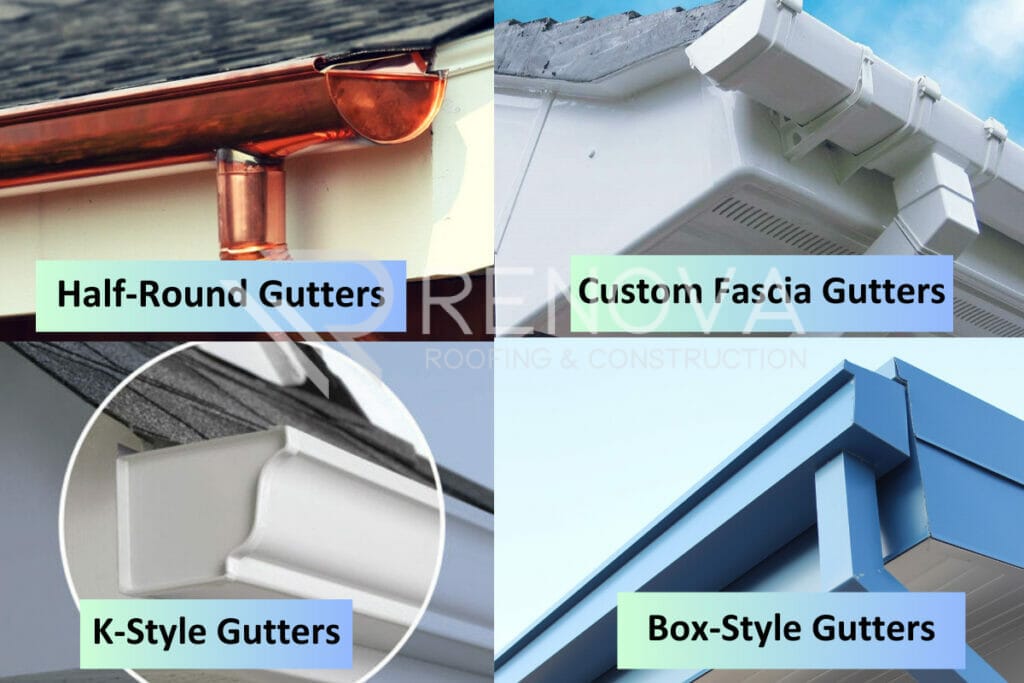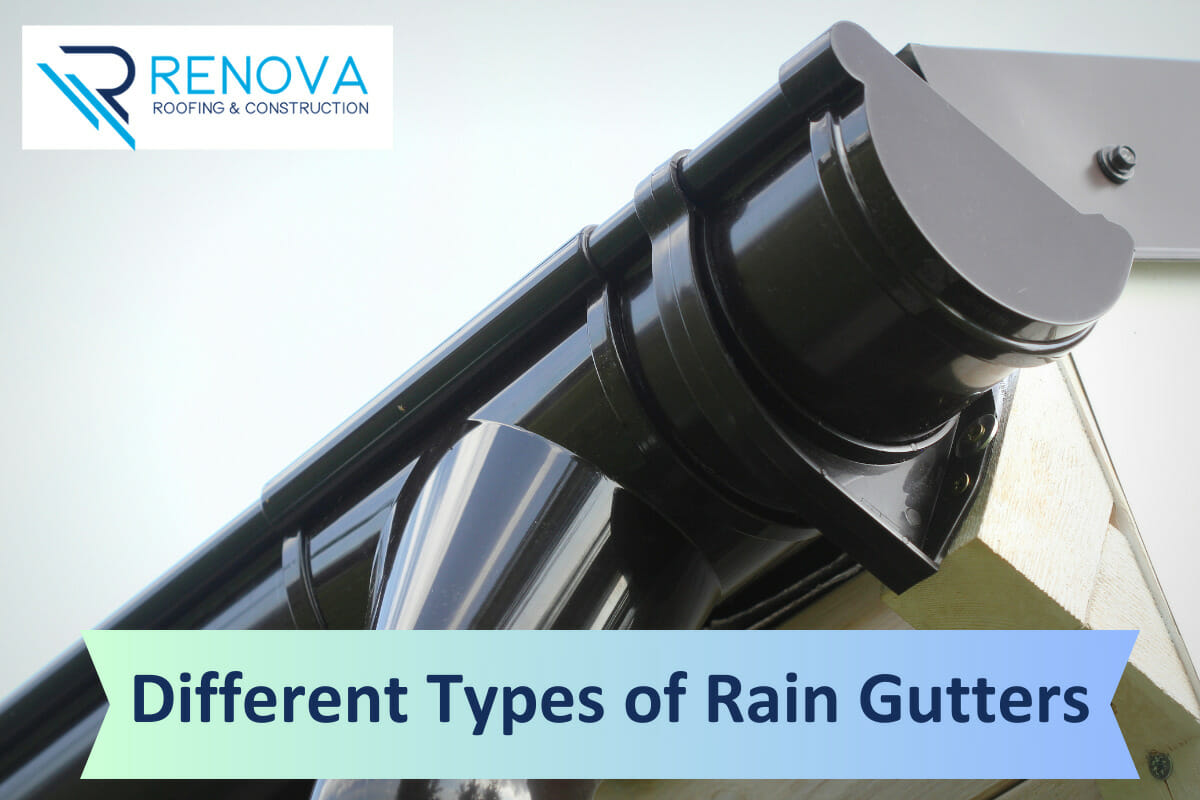Rain gutters play an important role in protecting your home from water damage and are an essential component of your home’s drainage system. They come in many types, styles, and materials, so you can select one that matches your unique taste and keeps your roof leak-free. But before we further discuss the various options available, it’s important to understand the role gutters play in safeguarding your home from water damage. Rain gutters are crucial in directing rainwater away from the roof and foundation, preventing erosion, leaks, and potential structural issues.
In this comprehensive blog post, we will delve into various types of rain gutters, their unique styles, and the pros and cons of each material, equipping you with valuable insights to make an informed decision for your home.
Choosing The Proper Rain Gutters For Your Home
When it comes to choosing the right rain gutters for your home, there are several factors to consider. First, you need to assess the climate in your area. If you live in a region with heavy rainfall, you’ll want gutters that can effectively handle large amounts of water. Gutters work in conjunction with downspouts and splash blocks to keep water away from the foundation, so keeping the climate in mind is important to prevent pooling and puddles around your home. Your personal style and the overall look of your property should also be considered to ensure the gutters blend seamlessly and aren’t an eyesore. Fortunately, there are plenty of options available, some of which we have outlined below.
Types of Rain Gutters
We will start by discovering the types of gutters. The most popular types of gutters are sectional and seamless gutters. Let’s take a closer look at both of them and explore their pros and cons.
#1. Sectional Gutters
Sectional gutters consist of pre-cut panels that are joined during installation. They are available in various materials, including aluminum, steel, and vinyl. Because sectional gutters are made up of individual pieces, if a specific section gets damaged or needs repair, it can be addressed without having to replace the entire gutter system. With sectional gutters, it is possible to customize the length of the sections according to the specific requirements of the roof. This flexibility allows for a precise fit and ensures that the gutters effectively collect and channel rainwater away from the roof.
Pros
- Cost-effective option
- Versatility for different roof configurations
Cons
- Higher risk of leaks
- Requires regular maintenance

#2. Seamless Gutters
Seamless gutters are a more advanced option that eliminates the need for seams and joints. Tailored to match the dimensions of your house perfectly, seamless gutters offer a streamlined and uninterrupted look. Made from aluminum or steel, they offer exceptional durability. Although the initial cost may be higher, it’s popular for homeowners seeking a long-term solution.
Pros
- Sleek and seamless appearance
- Minimal risk of leaks
- Reduced maintenance requirements
Cons
- Limited color options
- Longer installation time
- Higher up-front cost
Styles Of Gutters
There are four main gutter styles, each with its own benefits and drawbacks.
#1. Custom Fascia Gutters
Custom fascia gutters are designed to blend seamlessly with the architectural design of your home. Installed directly onto the fascia board, these gutters provide an integrated look. They are available in various materials, including aluminum, steel, and copper, balancing functionality and aesthetics. However, being exposed to the elements, they may require more frequent cleaning and maintenance.
Pros
- Potential for integrated features like leaf guards or heating elements
- Longevity and resistance to weathering and corrosion
Con
- Complex and costly replacements due to customization
#2. Half-Round Gutters
Half-round gutters offer a classic and elegant appearance with their semi-circle shape. Traditionally made of copper, they are also available in aluminum and steel. Half-round gutters allow efficient water flow and reduce debris buildup. However, their curved design may limit their capacity to handle heavy rainfall or large volumes of water.
Pros
- Easy cleaning
- Less debris accumulation
Cons
- Potential for dents and damage
- May be complicated to replace
#3. K-Style Gutters
K-style gutters, also known as ogee gutters, are the most common and versatile choice for homeowners. With a flat back and a decorative front that resembles the letter K, these gutters suit various architectural styles. They are available in aluminum, vinyl, and steel, and many different color options. The multiple crevices and corners of K-style gutters may require regular cleaning to prevent clogging and debris buildup.
Pros
- Versatile for varying architectural styles
- Wide range of color options
Con
- Requires regular cleaning to prevent debris buildup
#4. Box-Style Gutters
Box-style gutters, also called square gutters, provide a modern and clean aesthetic. Custom-made from sheet metal, they are commonly used in commercial and contemporary residential buildings. Box-style gutters offer excellent water-carrying capacity and durability. However, their installation requires precise craftsmanship and expertise, making them a more specialized option.
Pros
- Offers good protection for fascia boards and eaves
- Custom-fit to your home
Cons
- The box shape can accumulate debris if not cleaned regularly
- More expensive due to increased installation costs

Materials of Gutters
Gutters come in a range of materials, with vinyl and aluminum being the top choices among homeowners. However, it’s important to consider the advantages and disadvantages of each option. Below, we have outlined the different types of gutter materials available.
#1. Vinyl Gutters
Homeowners often prefer vinyl gutters because of their cost-effectiveness and minimal upkeep. Constructed from PVC (polyvinyl chloride), they resist rust, corrosion, and fading. Being lightweight and straightforward to install, they are well-suited for DIY endeavors. Nonetheless, it’s important to note that vinyl gutters may offer a lower level of durability than other materials and can become brittle, particularly in extreme temperatures.
Pros
- Does not require painting
- Affordable
Cons
- Less durable compared to other materials
- Prone to brittleness in extreme temperatures
#2. Aluminum Gutters
Aluminum gutters strike a balance between affordability and durability. They are lightweight and easy to handle during installation. Aluminum gutters are resistant to rust, making them ideal for areas with high humidity or frequent rainfall. They come in various colors and finishes, providing versatility in design. However, aluminum gutters may dent or bend under heavy impact, requiring occasional repairs.
Pros
- Aluminum gutters are rust-resistant and fully weatherproof
- Available as seamless gutters
Con
- Not as durable as other options
#3 Galvanized Steel Gutters
Galvanized steel gutters offer exceptional strength and durability. They are coated with a layer of zinc to protect against rust and corrosion. Galvanized steel gutters can withstand harsh weather conditions and are less likely to dent than aluminum gutters. However, the zinc coating may wear off over time, making them susceptible to rust. Regular maintenance, such as repainting and applying a rust-resistant sealant, is necessary to prolong their lifespan.
Pros
- Galvanized gutters are less susceptible to thermal damage
- Resistant to rust
Cons
- Scratches on the surface are noticeable
- Strong likelihood of corrosion in areas where the galvanized coating is missing or damaged

#4 Zinc Gutters
Zinc gutters are renowned for their longevity and natural resistance to corrosion. These gutters develop a protective patina over time, further enhancing their durability. Zinc gutters offer an elegant appearance and require minimal maintenance. However, they are relatively expensive compared to other materials, making them a premium choice for homeowners with a larger budget.
Pros:
- Zinc gutters are completely recyclable
- Long lifespan
Cons:
- Temperature restrictions
- Higher overall cost
#5 Copper Gutters
Copper gutters are highly sought after for their aesthetic appeal and exceptional durability. They develop a beautiful patina over time, enhancing the visual appeal of your home. Copper gutters require minimal maintenance and can last for several decades. However, copper gutters’ initial cost is significantly higher than other materials. Their installation may require the expertise of professionals due to the specialized techniques involved.
Pros:
- Offer superior durability
- Environmentally friendly option
Cons:
- Fairly expensive
- Requires professional installation
Conclusion
When deciding on rain gutters for your home, it’s crucial to consider the different styles, shapes, and materials available. Renova Roofing & Construction, a trusted name in the industry, can guide you through the process. Professional installation is recommended for most types of gutters, including box-style and custom fascia options.
Remember that while choosing a material, some offer affordability but may have a shorter lifespan than copper or zinc. To make an informed decision, weigh factors like cost, installation convenience, and durability. Contact Renova Roofing & Construction at (601) 647-3433 for expert gutter services.
FAQ’s
A. Rain gutters can be installed on various roofs, including flat roofs and sloped roofs. However, the installation method may vary depending on the roof’s design and materials.
A. Regular maintenance is essential to keep rain gutters in good condition. Cleaning them at least twice a year, removing debris, and checking clogs are recommended. Additionally, inspecting for leaks, loose fasteners, and proper alignment is essential for optimal gutter performance.
A. Factors such as roof size, rainfall intensity, and local building codes influence the sizing of rain gutters. It is advisable to seek guidance from a skilled gutter installer to determine the ideal size and capacity that suits your specific requirements.

